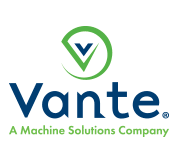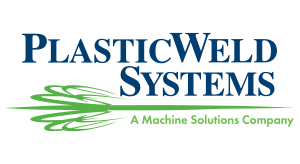Tell me a little bit about who you are and what do you do?

Danny:
Sure. So my name’s Danny Bogen, I’m VP of Sales and Marketing for Machine Solutions. Machine Solutions makes equipment for manufacturers of catheters and other medical devices. We have solutions for 28 different processes to help medical device manufacturers do testing and manufacture their catheters and other medical devices.
How does induction catheter tipping work?
Danny:
Sure. When medical device manufacturers are looking to make a catheter tip, usually you’re going to use a mold that is the shape of the product that you want to make. I describe it as a mini injection molding process. And then you’ll use either hot air or induction heating to send energy and heat into that mold, melt the plastic on the inside, and then as we jokingly like to say, we melt and squish the plastic in that die to take the shape of the interior of the mold. And then we cool the part down and remove it. And when it’s done, the part should have the shape that you desired for the tipping process.
What are some of the most common use cases for catheter tipping?
Danny:
Yeah. So, when you’re putting a tip on the end of the catheter, the idea is to be as atraumatic as possible when entering the body. So, customers are going to have specific shapes based on the application, where it’s going in the body, but typically you’re going to have a tapered end in order to make entry into the body without causing harm. Sometimes catheter tipping can be used to make a flare, maybe to create some sort of a lap joint or funnel for another product to be inserted. And then also you can use the technology to do butt welds or lap welds, where you actually want to bond two plastic materials together.
Tell me a little bit about the contract manufacturing side of your business.
Danny:
Yeah, so a couple of things about contract manufacturing. First off, Machine Solutions has a corporate belief that we should not compete with our customers. And so, we do not profit on contract manufacturing because a lot of our customers are contract manufacturers. So our goal is to sell equipment, not to sell components. With that said, there’s a certain level of proof of concept testing or prototyping work that you have to do in order to sell the equipment. And so we’ll do that. Probably the easiest one to explain is our Steeger brand, which does braiding in their lab. They have about 10 or 15 different braiders in their R&D lab. And customers will say, “Well, do I need a 16 carrier or a 32 carrier for this?” And we’ll run prototype tests on each, give them the results, and then they can decide what type of equipment that they want. And we’ll do short braid runs so that they can do testing, but we’ll never do large contract manufacturing runs. Because once again, some of our best customers are contract manufacturers and we choose not to compete against them.
Within the tipping product portfolio, we will do prototype to prove concept. And then I think what’s most important to our customers is our certification process. The first step in our certification process is to create what we call a form part drawing. And essentially we work with the customer to define what’s important in the design, as far as the geometry of the shape that they want to make and other key functional features. We then commit to make not just tooling, but to make a product that meets that specification. And we will measure 30 parts to show that we were able to consecutively make and meet the specification that the customer is looking for. So we don’t just give you tooling and say, “Hey, go make some parts.” We will actually do process development to make parts to the customer specifications so that we’re delivering certified solutions, not just hardware.
Talk to me a little bit about the machine configurations you sell.
Danny:
Sure. So Vante and PlasticWeld Systems came together, and offer different solutions for tipping and bonding. PlasticWeld is a really nice solution for R&D customers because the tooling is easy to make on your own. And so if you’re doing multiple iterations or if you have processes where you have dozens of different dies, the PlasticWeld platform can be a very nice solution for those types of manufacturers. Some of the challenges with PlasticWeld is that the positioning of the die takes time to set up. It might not be as repeatable a process as the Vante solution.
The Vante solution, we offer machines for R&D all the way up to full-scale automation production, depending on what the customer is looking for, but the dies are actually built into the RF coil. So when you’re changing die size, it takes literally seconds to change from a five French to a six French to a seven French without any engineer needing to do positioning and any chance at variability between the different sizes. So if you’re running high volume manufacturing, if you’re looking for flash free processes and you’re looking for high volumes, quick heating times, Vante can provide some solutions to meet those needs. Once again, from an equipment standpoint, we have entry-level R and D machines that start about $20,000 to fully automated machines that can cost a $100,000 or $250,000, depending on what level of automation you’re looking to provide
Are potential or current customers able to take tours of any of your facilities?
Danny:
Absolutely. We always invite our customers to run off their equipment prior to shipping, what we would call factory acceptance testing. And then of course in today’s time of COVID and travel restrictions, we’ve actually set up and been very successful doing virtual tours and virtual video conferences. So we always invite our customers to visit our facility either in person or virtually to get the training and get the confidence that they need before we deliver the equipment.
When somebody’s looking for a company that sells catheter tipping machines, in your opinion, what are some things they should look out for when they’re kind of comparing different companies together?
Danny:
All right. So when considering what type of tipping equipment to use, the first thing that I would recommend that they look at finding a turnkey solution. So once again, there are dozens of manufacturers that talk about the ability to make tooling. It’s one thing to make a tool. It’s another thing to make a product. And when you buy from Vante or PlasticWeld, you’re not just buying the hardware, you’re actually buying the solution that you can plug in the settings that our engineers provide and you can start making parts from day one. So the timeline to take apart from concept to manufacturing is something that’s really critical. And you want to partner with someone who has experience in making all sorts of different dies. Vante and PlasticWeld certify over 300 dyes annually and our engineers have literally, the experience of thousands of dies. And so when you partner with us, you get access to that experience.
And once again, we don’t just make hardware. We provide a technical solution to the customer. The other thing that you’re going to want to look at is scalability. So, a lot of customers need to make 10, 15, 30 parts to get going, and we can help with that proof of concept through our rapid prototyping services. But the real test of a tipping manufacturer is how do you make 500,000 parts without high scrap rate, without being dependent on operators? And we have lots of solutions that are effective in high volume manufacturing environments to ensure a high yield, low scrap rate and an efficient operating.
What are your biggest differentiating factors?
Danny:
I will say that one of the differentiators of our equipment is the ability to focus energy and heat into a very, very tight area. And what I mean by that is that we can go from 300 C down to ambient temperatures in less than half a millimeter. And what that enables is it enables us to make tighter bonds, to make flash free processes and to have a very, very controlled process that other vendors will not have. And so when you’re looking at cycle time, when you’re looking at scrap rate, and when you’re looking at performance, the technology that the Vante platform has to offer is unparalleled in the tipping manufacturing world. And that is why we have the superior technology and can provide superior processes for our customers.






